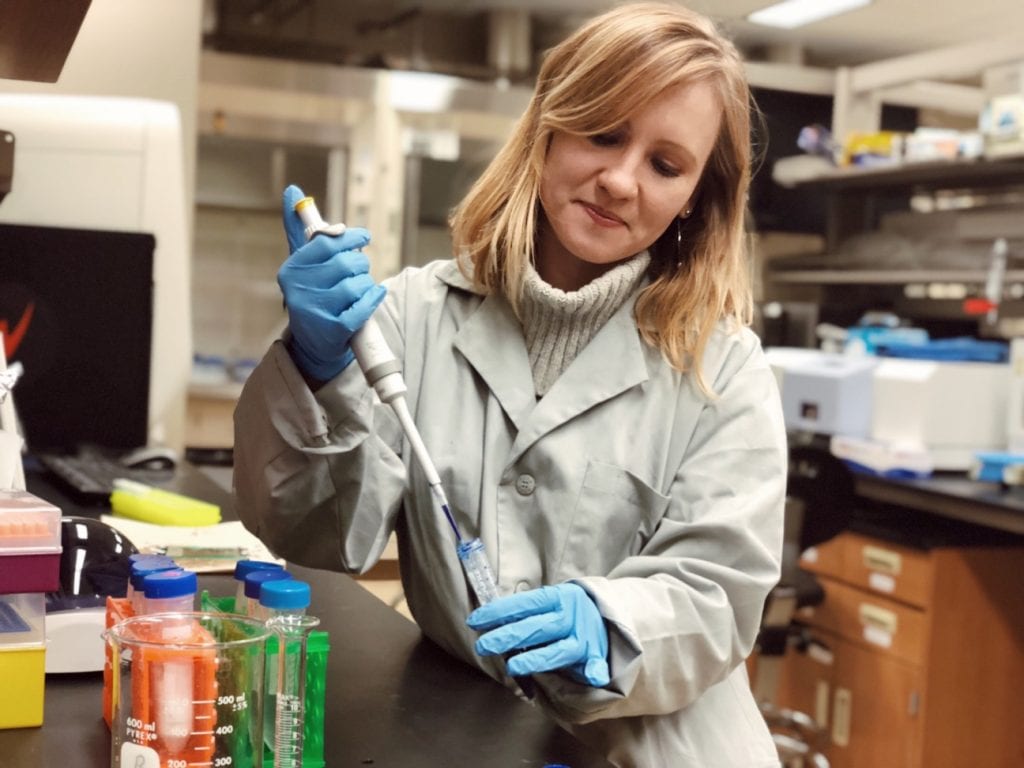Chemistry Grad Student Cracks Code for Colorblind Tests
 Tatiana Fedotava-Molden, a first-year Ph.D. student in the department of Chemistry, has already had her first research breakthrough and publication in one of the most prestigious international chemistry journals.
Tatiana Fedotava-Molden, a first-year Ph.D. student in the department of Chemistry, has already had her first research breakthrough and publication in one of the most prestigious international chemistry journals.
For a chemistry Ph.D. student, Molden had an interesting start. When she lived in Russia, she went to school for journalism and found herself at movie premieres interviewing and mingling with the stars. After moving to the United States in 2006, she decided to go back to school but for something completely different: science.
“I always like science so I started taking classes at Daytona State,” she said. “I got really good at chemistry and loved it, and people were always asking me if I was a chemistry major.”
Molden transferred to UCF, undecided whether she would continue to pursue chemistry or go for biomedical sciences. She happened to take Assistant Professor Dmitry Kolpashchikov’s class, where she discovered her passion for biochemistry and received an outstanding biochemistry student of the year award.
“It was clear to me that biochemistry was the right choice,” she said.
She began working in Kolpashchikov’s lab, where research is focused on biochemistry of nucleic acids, DNA and RNA. Many research projects in the group are dedicated to development of sensors for detection of DNA and RNA targets. Kolpashchikov had an idea to develop a sensor that would be based on the change of solution into gel state, rather than color change for some time, and he asked if anyone in the lab would be up for trying to get his idea to work. Previous students had tried, but had given up. Molden decided to take this project on.
“Dr. K kept telling me to give up, that it couldn’t be done,” Molden said. “But I kept trying, because there wasn’t any reason why it wouldn’t work.”
Molden cracked the code.
Most current tests rely on colors to show a positive or negative result, which can’t be performed by colorblind people or while in the dark. The new way of DNA detection that Molden developed will give users the result in the form of gel – so people will be able to feel the result, not rely on a color.
Their research was published in Chemistry Communications and took the cover of the journal. In addition, it was highlighted by, Chemistry World, a monthly chemistry news magazine published by the Royal Society of Chemistry.
“The only drawback to this type of testing is that you need more DNA than conventional tests, but we are going to work on that,” Molden said. “We can try amplification of DNA or RNA, to get the quantity necessary for the test. I think next we will try to detect viral viruses like Zika or influenza using our technology.”
Molden contributes her success to finding an advisor early on in her career. She says students should start their research early, and to ask professors about their lab work, and find a good fit.
“I never thought I’d be doing chemistry, after working in the entertainment newspaper industry,” Molden said. “I’m doing something more meaningful with my life now.”
